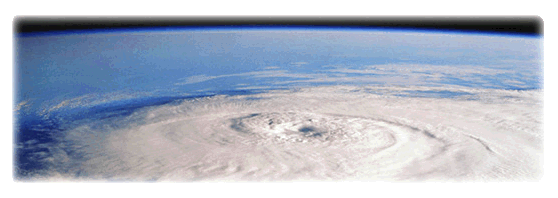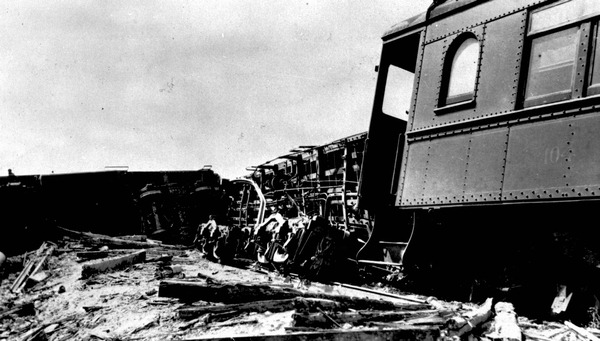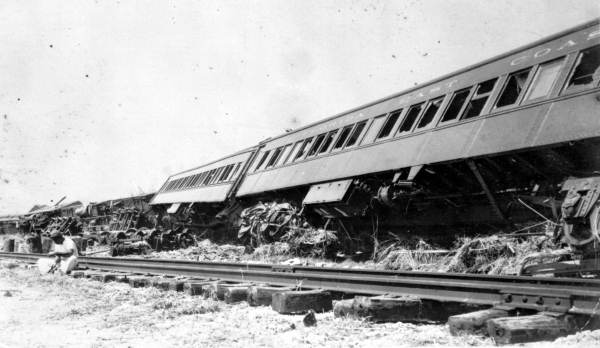
1935 LABOR DAY HURRICANE

On September 1, 1935, storm warnings were posted for all of south Florida, including the Keys. This was on Sunday, the day before Labor Day. Miamians wasted little time in beginning the task of boarding up, while down in the Keys the natives observed a ritual they had followed for generations. Boats were moved into sheltered coves and storm shutters were nailed over windows. Women cooked extra meals and sealed them in jars or put them to simmer on the backs of their stoves. Candles were rounded up and lamps were filled and their wicks were trimmed. Many lamps would remain unlighted and meals untouched, for out in the Atlantic was the most vicious hurricane North America has ever known.
When it was obvious on Monday that this storm would hit the Keys, a call was sent out near noon on Monday for the evacuation train. Perhaps because of the holiday or, possibly, no definite plans had ever been made, no train was waiting and ready at the town of Homestead. A call had to be relayed to Miami for one to be dispatched. It was five in the afternoon before a train finally left Homestead and began backing along the single track that stretched across the Everglades and down into the islands.

By 8:30 on that Labor Day night the train, which was the last hope of the veterans and hundreds of other people lving in the middle and upper Keys, came to a sudden halt. In the 3 1/2 hours that it had been backing down Flagler's railroad it had covered only 45 miles. When it reached the Islamorada water tank the 10 cars were tossed off the track and over on their sides by powerful waves that were now surging over the islands. The engine alone remained on its wheels, but it ceased to move because the fire in the box was out.

By Tuesday, the storm had gone and on that morning stragglers were making their way back up the string of islands to civilization. They told people first in Key Largo and then in Homestead that the hurricane had cut the string of islands in half. It seemed unbelievable, but entire islands had disappeared. They also said that hundreds of people were missing.




A slow drizzle of rain poured out of leaden skies. Dazed survivors continued to crawl out of their hiding places and look about them, wondering that they were still alive. Everywhere the islands were stripped bare, and death and destruction were all around. Houses, trees, and, here and there, even parts of the islands themselves had vanished. Out on Florida Bay, a big 2 story house minus its roof wallowed drunkenly on a sandbar.
On the following day the search for the dead commenced in earnest. Some had tied themselves to the trunks of trees. Others were floating out on the bay or washed up on tiny islands. Because the islands were small and the waters around them were vast, most of the victims were never found. Individual families knew, of course, who of their number were missing. Friends looked for friends, and now and then someone would think to ask if anyone had seen anything of the Jones or Smith family. Like as not they had vanished during the night with no one to mark the time of their going.


Because of mismanagement and lack of foreign freight heading northward from Cuban and Caribbean ports, the railroad was already in receivership. The railroad chose not to rebuild, citing financial difficulties. It had by this time become cheaper to haul cargo by truck than by train. The county's Overseas Road and Toll Commission purchased the right of way from the Florida East Coast Railroad and converted the single track railway trestles, which remained intact after the hurricane, into two-lane bridges for automobiles. The highway from Homestead to Key West opened for traffic in 1938.